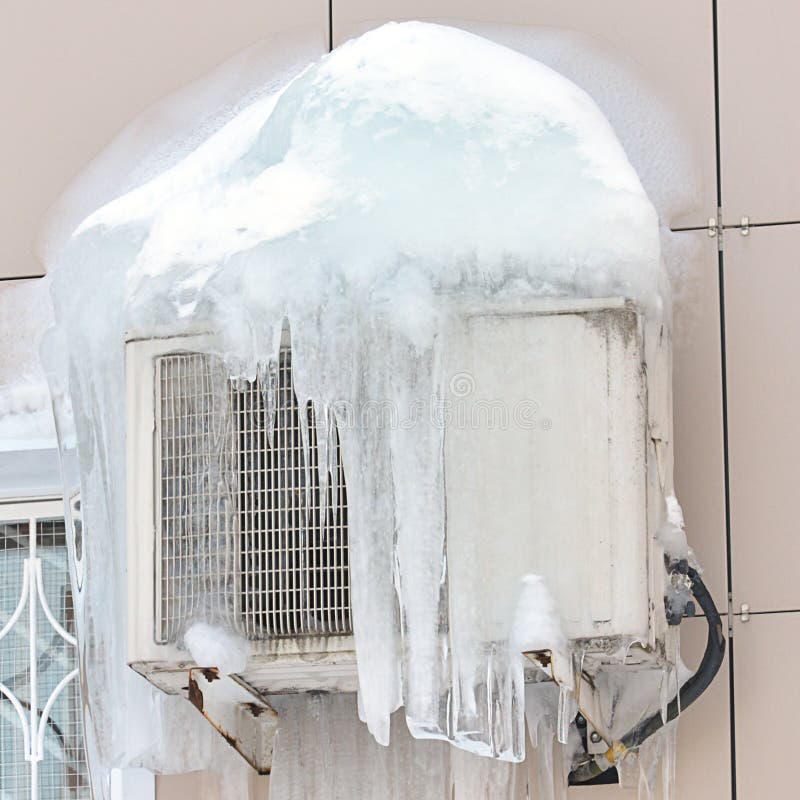The Air Conditioner Pipe Is Completely Frozen - What Should I Do? Steps for Remedy
The Air Conditioner Pipe Is Completely Frozen - What Should I Do? Steps for Remedy
Blog Article
What're your thoughts concerning Have a Frozen AC Line? Here’s How to Fix It?

Intro
Uncovering that your a/c pipe is iced up can be worrying, especially during hot summer months when you count on your a/c one of the most. Comprehending what to do in such a situation is important to prevent further damage to your cooling system and guarantee your comfort inside your home.
Comprehending the Causes
A number of aspects can contribute to the cold of an air conditioner pipe. Recognizing these causes can aid you resolve the problem efficiently.
Absence of Airflow
One common root cause of an icy AC pipe is inadequate airflow. When the air movement over the evaporator coil is limited, it can trigger the coil to drop below freezing temperature, resulting in ice development on the pipeline.
Low Refrigerant Levels
Inadequate refrigerant levels in your air conditioning system can additionally result in an icy pipeline. Low refrigerant degrees can trigger the stress in the system to drop, causing the cold of moisture on the evaporator coil.
Winter Conditions
In colder environments, freezing temperatures outside can add to the freezing of AC pipes. If your AC system is not properly shielded or if there are leakages in the ductwork, cold air can infiltrate the system, creating the pipeline to freeze.
Dirty Air Filters
Filthy or clogged up air filters can limit airflow in your air conditioning system, causing numerous concerns, consisting of a frozen pipe. It's necessary to replace or clean your air filters frequently to make certain appropriate air flow and avoid ice build-up.
Signs of a Frozen AC Pipe
Acknowledging the indicators of a frozen AC pipeline is vital for punctual activity.
Minimized Airflow
If you see a considerable decline in air flow from your vents, it might indicate an icy pipeline.
Ice Buildup on the Pipe
Noticeable ice build-up on the cooling agent line or the evaporator coil is a clear indicator of an icy a/c pipeline.
Unusual Sounds from the Unit
Unusual audios, such as hissing or gurgling, coming from your AC unit can signify that there's ice existing on the pipe.
Immediate Actions to Take
When faced with an icy air conditioner pipe, it's essential to act swiftly to avoid more damages to your air conditioning system.
Turning off the air conditioning
The initial step is to turn off your a/c to prevent the system from running and aggravating the concern.
Looking for Blockages
Evaluate the location around the interior device for any type of blockages that may be obstructing air movement, such as furnishings or drapes.
Defrosting the Pipe
You can make use of gentle approaches like placing towels taken in cozy water around the icy pipeline to assist thaw it gradually.
Preventive Measures
Taking preventive measures can aid prevent future events of a frozen air conditioning pipe.
When DIY Methods Fail
If your attempts to thaw the pipe or address various other concerns are not successful, it's time to contact an expert.
Significance of Hiring a Professional HVAC Technician
A licensed HVAC technician has the experience and devices essential to identify and repair problems with your air conditioner system securely and successfully.
Routine Maintenance Checks
Schedule normal maintenance consult a specialist HVAC service technician to guarantee that your air conditioner system is running efficiently.
Altering Air Filters
Frequently change or clean your air filters to stop airflow restrictions and keep ideal efficiency.
Insulating Exposed Pipes
If your air conditioning pipelines are subjected to cold temperatures, take into consideration insulating them to stop cold throughout winter season.
Looking For Professional Help
If DIY techniques fall short to deal with the concern or if you're not sure about exactly how to proceed, it's finest to seek support from a certified HVAC technician.
Conclusion
Taking care of an icy AC pipeline can be an aggravating experience, but knowing exactly how to respond can help minimize damage and restore convenience to your home. By comprehending the reasons, acknowledging the signs, and taking timely action, you can properly deal with the concern and protect against future incidents.
What to Do If Your AC Line Is Frozen
Make Sure All Supply and Return Air Vents Are Open
If you notice problems with airflow, the first thing you should do is check your supply and return vents. Supply vents distribute clean, conditioned air throughout your home. As this air becomes stale, it’s pulled into the return vent, where it’s reconditioned before being sent back out through the supply vent.
When these vents are closed, air won’t flow in the home. Before examining your AC, check the vents in every room and ensure they’re all open.
Check for a Dirty Air Filter
Another possible cause of limited airflow is a dirty air filter. Your air conditioner’s filters catch elements you don’t want to breathe in, such as dirt and dust. Over time, filters can become clogged, ultimately blocking air from flowing in and out. The lack of airflow can then cause the entire coil to freeze and will completely restrict any air from moving through it. The AC may need to be powered off for one to two days to allow the coil to thaw after replacing the filter to allow proper functioning of the unit. This debris can also accumulate on your AC’s evaporator coil, requiring a more serious repair. In general, air filters should be cleaned regularly (about every two weeks).
Assess Your Outdoor Unit
In addition to checking your AC, assessing the outdoor unit is a good idea. Also known as the condensing unit, it works with your interior unit to release heat outside. An issue with the outdoor unit can result in rising internal temperatures.
Overgrown Shrubs or Clogged Leaves
From leaves and twigs to shrubs and debris, there’s no shortage of outdoor elements that can accumulate around your condensing unit. When these elements get lodged inside the unit, they can block airflow. Fortunately, removing the blockage can solve the problem.
Sounds of a Broken Fan
Shrubs and leaves aren’t the only things that can impede your outdoor unit’s airflow. If the fan is broken, the unit won’t be able to properly get rid of heat — which means the internal temperature won’t go down. First, make sure the fan is spinning. If it is, check for the following sounds of a broken fan:
Buzzing Rattling Screeching Hissing Clicking Preventative Measures
Nobody wants to deal with a frozen AC line. In addition to causing problems with your air conditioner, they require professional repairs. On the bright side, there are preventative measures you can take to help ensure this issue doesn’t arise in the first place.
https://www.coopergreenteam.com/blog/what-to-do-if-ac-line-frozen

I found that article on Why Is Ice On My Outside Air Conditione while exploring the internet. Are you aware of somebody who is fascinated with the niche? Please feel free to promote it. We truly appreciate reading our article about How can I fix an air conditioner’s frozen pipe?.
Call Today Report this page